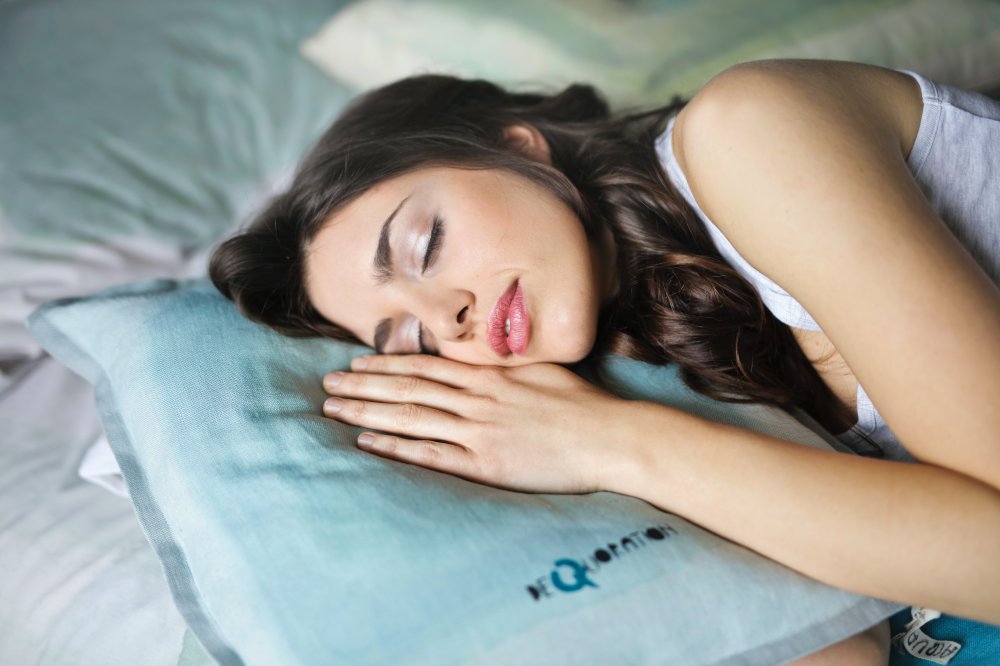Breathe Easier With Sleep Apnea Treatments
Sleep apnea is a common disorder that causes people to have shallow breaths or pauses in their breathing while asleep.
This condition can cause snoring, fatigue, and headaches because your body is not receiving enough oxygen when you sleep. Depending on your sleep apnea, these symptoms can range from mild to severe.
If you’re suffering from sleep apnea, don’t despair — no matter how severe your sleep apnea is, you can work with your dentist to explore the different ways of treating sleep apnea, so you can start getting a better night’s rest!
Continuous Positive Airway Pressure (CPAP) Machine
A CPAP machine is the best way to treat patients with moderate to severe sleep apnea.
This machine consists of a hose connected to a mask or nosepiece, which you wear when you go to bed, to deliver constant and steady air pressure to open your airways and help you breathe while you sleep.
This air pressure is slightly stronger than the pressure of the surrounding air, which is why it can force open your airways.
The steady flow of pressurized air drastically reduces or eliminates snoring altogether and helps ensure you get enough oxygen when sleeping, alleviating other sleep apnea symptoms.
Although using a CPAP machine is one of the most common and reliable ways to treat sleep apnea, some people find wearing the mask and hose at night uncomfortable.
You may want to experiment with different styles of CPAP masks to find one that works best for you. The different CPAP masks available include:
- Nasal mask: covers only your nose. It is recommended for people who move around a lot when they sleep.
- Nasal pillow mask: doesn’t cover your entire nose, only the nostril area. They provide minimal facial coverage and are very lightweight, making them the best option for people with claustrophobia.
- Full mask: Fits over the mouth and nose. Best for people who breathe through their mouth when sleeping.
Using a CPAP machine may feel strange and unnatural when you first start, but with time you will become accustomed to it and should be able to get a full night’s sleep while wearing the mask.
However, CPAP machines work best if you use them every night. Otherwise, it takes longer to get used to them, and the treatment may be less effective in the long run.
Mandibular Advancement Device (MAD)
A mandibular advancement device is an oral sleep apnea appliance used to move your jaw forward and open your airways while you sleep.
A MAD appliance looks like a mouthguard and can be custom-designed to fit your mouth perfectly. There are also more generic over-the-counter MADs available, although these are less comfortable to wear than custom oral appliances and may not be as effective.
Although CPAP machines are a more effective way to treat sleep apnea than oral appliances, some people find that MADs are more comfortable to wear and thus make it easier to sleep. This also means they’re more likely to use them every night, which is essential to successfully treating sleep apnea.
It’s important to note that, on their own, MADs can only be used to treat mild to moderate sleep apnea. However, they can also be paired with CPAP machines to treat more severe cases.
Tongue Retaining Device
A tongue-retaining device is another oral appliance used to treat sleep apnea. These devices act as a splint in your mouth to hold your tongue in place and keep your airways open while sleeping.
In terms of appearance, tongue-retaining devices for sleep apnea consist of a small piece of plastic that sits at your lips, resembling a pacifier, with a hole where you put your tongue.
Like mandibular advancement devices, some people consider tongue-retaining devices more comfortable than CPAP machines. They can only be used on their own for treating mild to moderate sleep apnea. They can also be used in tandem with CPAP machines to treat more severe sleep apnea cases.
Other Methods
In addition to the different sleep apnea treatments discussed above, there are other ways to treat sleep apnea on your own, many of which are related to your lifestyle and overall health. The big ones include:
- Weight loss
- Quitting smoking
- Better cardiovascular health
Sleep apnea can sometimes be caused by excess weight, so reducing your weight can sometimes help alleviate sleep apnea symptoms. Exercise and a healthy diet, especially for those suffering from some level of obesity, can go a long way toward treating sleep apnea.
If you are a smoker, quitting will also help your sleep apnea treatment. The smoke from tobacco irritates your airways and increases the inflammation and fluid in the upper airway, contributing to difficulty breathing and complicating your sleep apnea symptoms.
Conditions such as high blood pressure, type 2 diabetes, and congestive heart failure can also cause sleep apnea complications. So, keep up on any heart medications and focus on living a healthy lifestyle to improve your cardiovascular health and help mitigate your sleep apnea symptoms.
In short, the healthier you are overall, the less severe sleep apnea tends to be. Here’s a summary of what you can do to live a healthy lifestyle that may help reduce your sleep apnea:
- Eat a healthy diet
- Exercise regularly
- Maintain a healthy weight
- Quit smoking
- Avoid excessive alcohol
- Stay on top of medications for heart-related conditions
Lastly, if you take any medications for other conditions, check with your doctor to ensure they won’t directly or indirectly worsen your sleep apnea, as certain medications can interfere with your treatment.
Connect with Dr. Lee Simon Today
Working with your dentist to explore the different sleep apnea treatments available to you can significantly reduce the severity of your sleep apnea in a short amount of time, so you can start sleeping better tonight!
Contact Dr. Lee Simon today to learn more about your sleep apnea treatment options.

